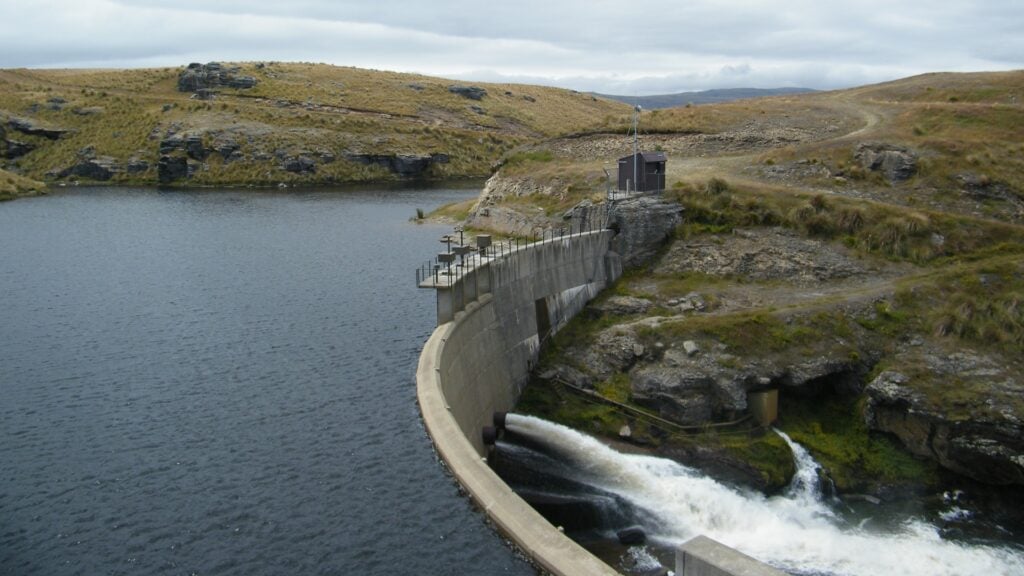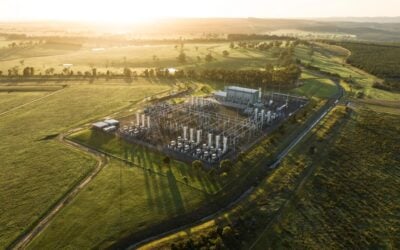
The government of New Zealand is considering the viability of pumped hydro energy storage (PHES) among its options to plug energy deficits of between 3TWh and 5TWh.
As the country increases it share of renewable energy on the grid, along with solar PV and wind, hydroelectric power (hydropower) will play a major role in the energy mix.
Enjoy 12 months of exclusive analysis
- Regular insight and analysis of the industry’s biggest developments
- In-depth interviews with the industry’s leading figures
- Annual digital subscription to the PV Tech Power journal
- Discounts on Solar Media’s portfolio of events, in-person and virtual
However, in ‘dry years’, which the government said are hard to predict coming but have occurred roughly twice per decade in the last 20 years, can cause that energy deficit, equivalent to about 10% of New Zealand’s annual energy needs.
That finding comes from NZ Battery Project, which the government set up in 2020 to help tackle that problem and overcome the shortfall issue without the use of fossil fuels.
Minister Megan Woods, who has a portfolio that includes energy and resources as well as infrastructure, said yesterday that NZ Battery Project has been progressed to its next stage, which is to explore the feasibility of pumped hydro energy storage as an option along with what was described as “an alternative, multi-technology approach”.
“Until we address the dry year problem, we will continue to rely on burning expensive and polluting fossil fuels to produce our electricity. That’s bad for the climate and our power bills. Pumped hydro is an ingenious way of storing energy in a big reservoir, which is released into a lower reservoir when more power is needed, like a giant battery,” Woods said.
One PHES project being considered is at Lake Onslow, a large man-made lake in the Otago region of New Zealand’s South Island.
Estimates put the cost of the project, which would take roughly seven years to build, at NZ$15.7 billion (US$9.81 billion), following geotechnical investigation and other work carried out by Te Rōpū Matatau, an engineering consortium headed by Mott MacDonald and appointed by NZ Battery Project.
PHES scheme could cover full 5TWh shortfall
Some media outlets jumped on that cited cost announcement – while minister Megan Woods had acknowledged the capital cost had risen from an earlier estimate of NZ$13.5 billion, albeit with a higher operating cost included – both figures were significantly higher than the NZ$4 billion quoted in a 2006 study.
That study however, was described as a “desktop study” developed by the government’s Interim Climate Change Commission, and the scheme currently being explored would be considerably larger than the 2006 plan.
In fact the NZ$15.7 billion estimate would be against a reference case in which the Lake Onslow scheme could provide the entire 5TWh upper range figure, meeting the entire 10% shortfall from one single project.
“We always knew that any dry year battery storage solution will require significant investment, that’s why it’s important we thoroughly test these scenarios and get it right,” Woods said.
“Now some more detailed work has been done we have a much clearer picture of the projected costs which differ significantly from the 2006 high level costings. The next phase will be to dig even further before we look at spending such a huge amount of money, but one thing we do know is that doing nothing to plan for climate change is not an option.”
The Te Rōpū Matatau studies represent part of Phase 1 of the NZ Battery Project, with Phase 2 set to look at funding and financing models, should the Lake Onslow option continue to progress through the required stages.
Other options being considered for New Zealand, according to Woods, are biomass, flexible geothermal and hydrogen, along the possibility of a smaller PHES scheme.
While PHES could be a solution for long-duration energy storage (LDES) for New Zealand’s energy networks, in terms of shorter duration facilities New Zealand currently only has two grid-scale battery energy storage system (BESS) projects in operation so far, both of a megawatt output each with around 2-hour duration.
Meanwhile a much larger BESS, at 100MW/200MWh is currently under construction through state-owned utility Meridian Energy. Saft is supplying the BESS equipment for that project, Ruakākā Battery Energy Storage System. Construction was cleared to proceed late last year, as reported by Energy-Storage.news.
Energy-Storage.news’ publisher Solar Media will host the 1st Energy Storage Summit Asia, 11-12 July 2023 in Singapore. The event will help give clarity on this nascent, yet quickly growing market, bringing together a community of credible independent generators, policymakers, banks, funds, off-takers and technology providers. For more information, go to the website.






